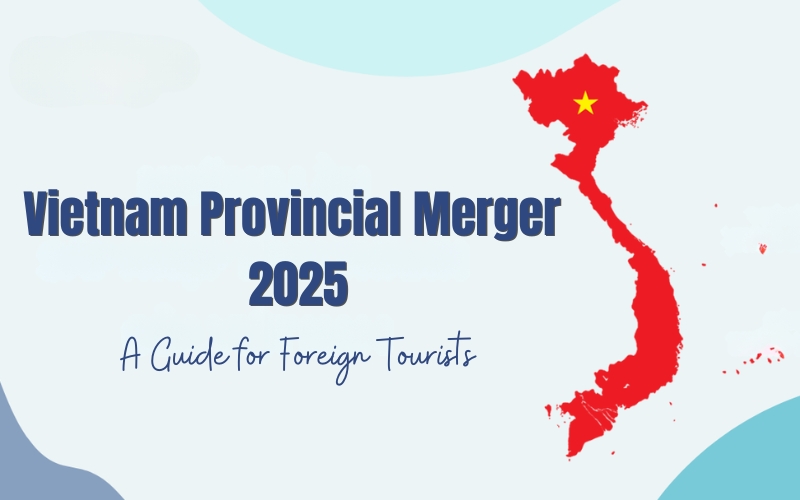
Are you planning to travel to Vietnam after July 1, 2025? With the province merger from 63 to 34, this change may have some impact on your trip. This article will guide you through what the Vietnam provincial merger means for travelers, how it may impact your trip, and most importantly, how to prepare so you can enjoy your trip without any hassle.
Vietnam provincial merger 2025 & Why it matters for travelers
Starting July 1, 2025, Vietnam will officially undergo a major administrative change: a number of provinces will be merged into 34 larger administrative units, including six centrally-governed cities and 28 provinces. While the change is largely focused on improving governance, streamlining the bureaucracy, and reducing administrative overlap, it also comes with practical implications for international visitors to Vietnam.
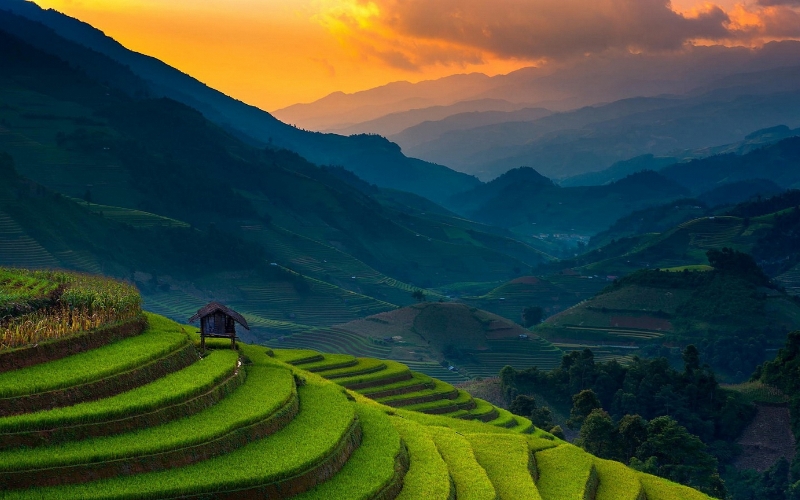
Even though Vietnam’s provincial names are changing, the natural beauty and travel experiences across the country stay the same
First, Vietnam’s new provincial structure could shape the way travelers research, plan, and navigate their trips. Many travelers rely on guidebooks, blogs, or Google Maps when searching for a destination, and these sources often use the old provincial names. With the merger, some of the province names you’ve heard of, especially in lesser-known areas, may disappear or be combined into a new one. That may make it harder to find travel information using older references, at least until online platforms and websites update everything.
In short, the map of Vietnam is changing, and while the transition may create a few hiccups at first, the ultimate goal is to create a more connected and tourist-friendly country. This merger may not change your itinerary overnight, but it will affect your travel experience in Vietnam, both now and in the future.
Provinces and cities in Vietnam after merger: What the new map looks like
Vietnam has recently merged a number of provinces and cities to form larger administrative units, aiming to streamline management and improve efficiency. These changes are mostly internal and administrative, so they won’t have much impact on popular tourist attractions and routes. However, new names and boundaries may appear on updated maps, booking platforms, and official documents, so travelers should take note. Some notable examples include:
- Northern Provinces: The merger of Tuyen Quang and Ha Giang, Yen Bai and Lao Cai, Bac Kan and Thai Nguyen, and the consolidation of Vinh Phuc, Phu Tho, and Hoa Binh into a larger Phu Tho province. Similarly, Bac Ninh and Bac Giang are set to merge into Bac Ninh province, and Hung Yen with Thai Binh to form Hung Yen province. Hai Duong and Hai Phong are slated to merge into Hai Phong City. The combination of Ha Nam, Ninh Binh, and Nam Dinh into Ninh Binh province.
- Central and South Central Regions: Quang Binh with Quang Tri to become Quang Tri province, are also part of this restructuring. Significant mergers in the central region also include Quang Nam and Da Nang becoming Da Nang City, and Kon Tum with Quang Ngai forming Quang Ngai province.
- Southern and Central Highlands Regions: Further south, mergers like Dak Lak and Phu Yen, along with consolidations in the Mekong Delta region (e.g., Tien Giang and Dong Thap; Kien Giang and An Giang; Ben Tre, Vinh Long, and Tra Vinh), are designed to create more integrated development zones. Ho Chi Minh City is also expected to expand by incorporating areas from Binh Duong and Ba Ria – Vung Tau, while Can Tho will integrate Soc Trang and Hau Giang.
- The list of 11 provinces and cities that will not merge includes Hanoi, Hue, Lai Chau, Dien Bien, Son La, Lang Son, Quang Ninh, Thanh Hoa, Nghe An, Ha Tinh, and Cao Bang.
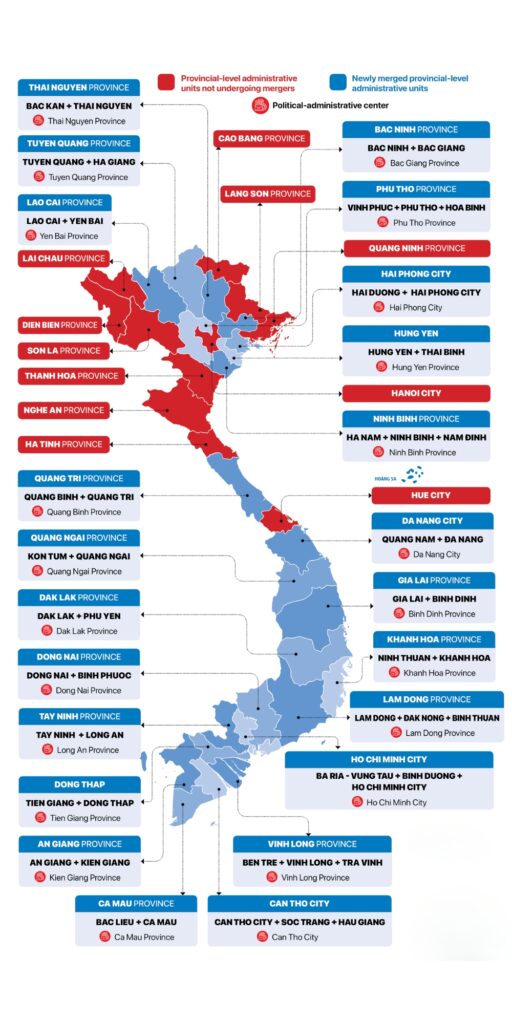
Map of provinces and cities in Vietnam after merger
How this change may affect your travel experience in Vietnam
The merger of provinces in Vietnam is designed to simplify administration and promote development, bringing about better changes for visitors. Of course, any major change takes time, and it may bring some obstacles to your trip to Vietnam. Here are some things you should know before your next trip:
Positive effects for travelers
Easier travel between regions, especially in remote areas: One of the most obvious benefits is the reduction of administrative boundaries between provinces, making it easier and more convenient to travel between destinations. If you travel by car or bus, you won’t have to go through multiple checkpoints or deal with minor regulatory differences between regions. This is especially useful in remote areas such as mountainous areas, highlands or islands, where travel can involve crossing multiple provincial borders in a single day.
Improved tourism infrastructure and amenities: The merger will bring greater uniformity to administrative agencies, which means public works and infrastructure projects will be approved more easily. For visitors, this means better roads, more consistent public transport and faster upgrades to airports, ports and tourist attractions across the newly expanded provinces. This could spur the construction of additional tourism-oriented facilities such as resorts, golf courses, entertainment venues and more. This change may not be instantly visible, but in the next 1–2 years, travelers can expect improved convenience and quality of services in both popular and lesser-known destinations.
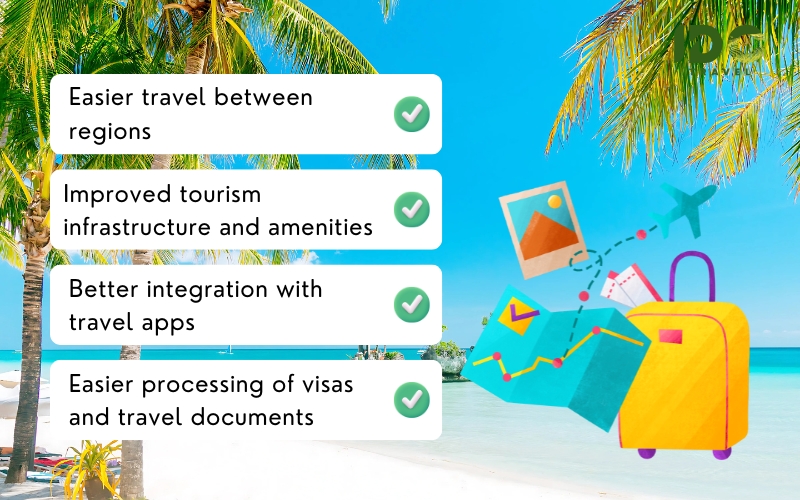
The positive side of the merger for tourists
Easier processing of visas and travel documents: Another positive aspect of the consolidation of Vietnam’s provinces is the simplification of administrative processes, including those affecting foreign visitors such as visa management, registration and reporting. Previously, when traveling to smaller provinces, you sometimes faced inconsistent procedures or delays when dealing with local immigration authorities or visa extensions. With a more streamlined provincial structure, immigration reporting systems and databases can be better integrated, making the process more consistent, faster and simpler for travelers to Vietnam.
Better integration with travel apps: Mapping or online booking apps such as Google Maps, Grab, Agoda and Booking.com will eventually adapt to the new administrative boundaries, meaning simpler search results and greater accuracy when booking hotels, booking cars or searching for landmarks. As the updates roll out, the map of points will be clearer, with less duplication and fewer mismatched entries based on outdated provincial data.
> > > Planning a trip through Vietnam’s newly merged regions? Explore our Vietnam tours to discover the best experiences in every region, from timeless Halong Bay to the hidden gems of the central highlands.
Negative effects for travelers
Outdated maps and confusing GPS (Temporary): While the changes officially come into effect on 1 July 2025, it can of course take weeks or even months for all local signs, digital maps and platforms to be fully updated. This means that you may encounter situations where information pages and apps have not been updated in sync, resulting in different information. For example, you may be mistaken when booking accommodation or booking a ride. To avoid getting lost or confused, double-check the location on the map, preferably searching by both the old and new names.
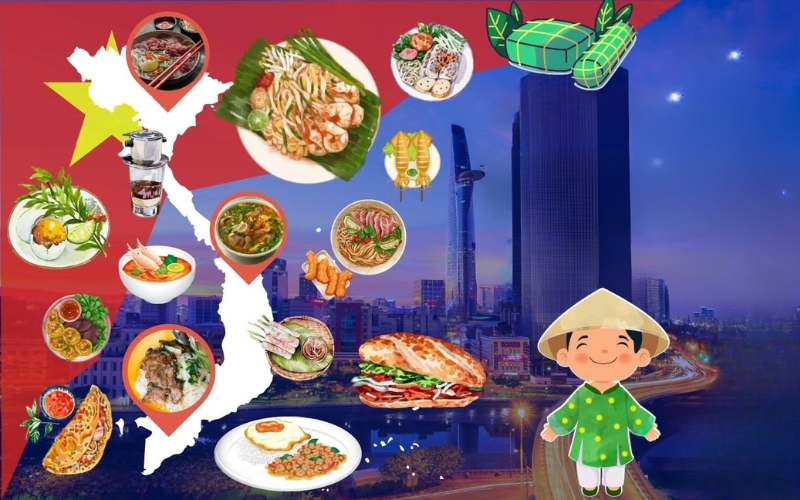
Culinary map of specialties of Vietnamese provinces and cities
Loss of local identity in some famous destinations: Vietnam is famous for its strong local identity and specialty products associated with each region, such as Phu Quoc fish sauce, Moc Chau tea or Ben Tre coconut candy. After the merger, some of these provinces may become sub-regions within a larger provincial unit, which may cause confusion about the labeling or identification of these famous items. Therefore, it is recommended that you continue to use the traditional names when shopping or asking locals for directions, especially if you are in a famous tourist destination.
Some useful tips for your upcoming trip to Vietnam
Here are some practical and friendly tips to help you travel smoothly during this transition:
- Update your app regularly: it will take some time for the platforms to update all the locations. So, update your app regularly, use both the new and old names of the destination when searching, and pin the destinations you need on the map to ask locals when needed.
- Check the names of the destinations: when you book a tour or travel, specify the name of the city or town you want to go to, not just the name of the province as they may be merged with another province. Especially when booking domestic flights or intercity buses, double-check the names of the departure and destination points to avoid confusion.
- Be careful when booking hotels: some small hotels or family-run guesthouses may not update their addresses immediately, if you book online, don’t just look at the address on it, check the location of the hotel on the map, using Google Street View or satellite mode. If you are unsure, contact the hotel directly to confirm.
- Use the old name with locals: While the province name may change, locals will still refer to their hometown, food, and attractions by their traditional names, which they are proud of and you should too.
- Embrace the change in a positive way: Instead of worrying about traveling during this time, see it as an opportunity to explore and connect. You may discover new destinations as they merge with larger provinces that you may not have known about before.
Traveling in Vietnam after the province merger may require you to pay more attention when preparing for your trip. With this article, you will be well prepared to enjoy a rich, smooth, and authentic travel experience. Need help adjusting your itinerary or navigating new regions? Contact us today to make your travel easier.
Read more:
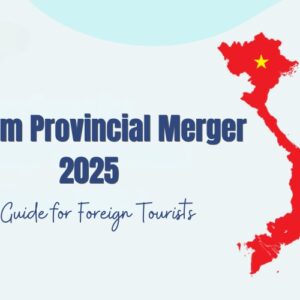



Great information! But I search on Google Maps, still the old province names
Dear Nandale,
Thanks for pointing that out! Yes, some platforms like Google Maps may take time to update new provincial names after the merge. It’s a good idea to cross-ckeck with official sources for the most accurate infor.
Best regards,
IDC Travel Team.
Very informative. Will this affect regional festivals or public holidays in those provinces?
Dear Graysen,
Thank you for your thoughtful question! At this time, there have been no official announcements indicating changes to regional festivals or public holidays as a result of the proposed provincial mergers in Vietnam. Each locality is expected to continue preserving its unique cultural identity and traditional events. However, we will be closely monitoring any updates and will be happy to assist with the latest information as your travel dates approach. Feel free to reach out anytime if you have more questions!
Best regards,
IDC Travel Team.